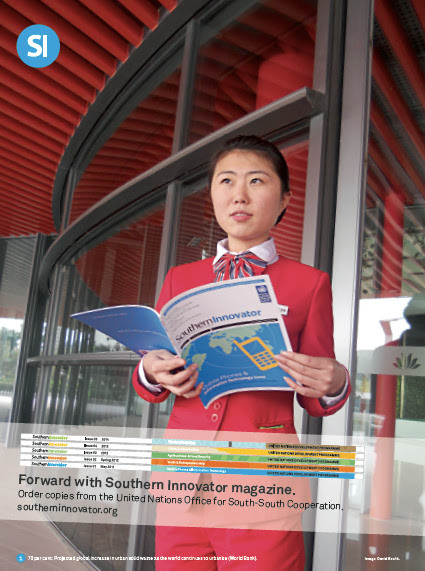Tackling China’s Air Pollution Crisis: An Innovative Solution
 Wednesday, July 1, 2015 at 11:38AM
Wednesday, July 1, 2015 at 11:38AM
China reached an undesired landmark in 2013. While the country’s impressive economic growth has amazed the world, it has come at a price: pollution. China recorded record levels of smog in 2013, with some cities suffering air pollution many times above what is acceptable for human health.
This is evidence of the perils of rapid industrialization using non-green technologies. China relies on coal burning, a highly polluting resource, for 70 to 80 per cent of its electricity. It also uses coal for factories and winter heating.
Burning coal causes smog, soot, acid rain, global warming, and toxic air emissions (http://www.ucsusa.org/clean_energy/coalvswind/c01.html). Environmental group Greenpeace claims 83,500 people died prematurely in 2011 from respiratory diseases in Shandong, Inner Mongolia and Shanxi – the top three coal-consuming provinces in China.
Anyone visiting Beijing or other Chinese cities will notice the high levels of smog and how this interferes with access to sunshine and curbs visibility. Worse still for human beings and the environment, this level of pollution causes severe respiratory problems, and has the potential to cause a rise in cancer rates, among other health problems.
Beijing had record pollution levels in January 2013. That haze, according to China’s Ministry of Environmental Protection, covered 1.43 million square kilometers.
Generated by industry and coal-fired power stations, particulate matter (http://www.epa.gov/pm/) or PM, is a complex mix of extremely small particles and liquid droplets. Particle pollution is made up of a number of components, including acids (such as nitrates and sulfates), organic chemicals, metals, and soil or dust particles.
In October 2013, Beijing announced a series of emergency measures to tackle the record high levels of pollution and smog (http://edition.cnn.com/2013/10/23/world/asia/china-beijing-smog-emergency-measures/index.html). The Heavy Air Pollution Contingency Plan uses a color-coded warning system if serious pollution levels occur in three consecutive days. This means kindergartens, primary and middle schools will need to stop classes. Eighty per cent of government cars must come off the roads and private cars can only enter the city on alternate days based on a ballot system. Emergency measures will come into play when the air quality index for fine particulate matter, called PM2.5 (http://www.epa.gov/pmdesignations/faq.htm#0) – very fine particles that lodge in the lungs and are very harmful to human health – exceed 300 micrograms per cubic meter for three days in a row. According to the World Health Organization (WHO), the safe limit for human beings is 20 micrograms (http://www.who.int/mediacentre/factsheets/fs313/en/).
The only serious, long-term solution is to switch to non or low-polluting green energy sources. But, meanwhile, some are coming up with stop-gap measures that also help to educate people about the necessity to do away with this major threat to human health.
Dutch designer Daan Roosegaarde (studioroosegaarde.net) thinks he has a temporary solution to the pollution problem – a “vacuum cleaner” to clean up the sky. And the city of Beijing is taking the solution seriously.
The proposed technology works like this: a system of buried coils of copper produce an ion electrostatic field that attracts smog particles. The particles are magnetized and are drawn downwards, creating a gap of clean air above the coil.
Called the Smog project, it is already under discussion with the mayor of Beijing. An animation video explains how it works: http://studioroosegaarde.net/video/the-smog-project/.
Talking to CNN, Roosegaarde likened the science behind the invention to what happens when “you have a balloon which has static (electricity) and your hair goes toward it. Same with the smog.”
In a deal with the Beijing city government, the technology will be tested in the city’s parks.
Roosegaarde has successfully tested the technology indoors and found it worked in the experiment.
He told CNN: “Beijing is quite good because the smog is quite low, it’s in a valley so there’s not so much wind. It’s a good environment to explore this kind of thing.”
“We’ll be able to purify the air and the challenge is to get on top of the smog so you can see the sun again.”
Roosegaarde thinks that successfully running the experiment in a Beijing park makes a radical statement and shows the benefits of breathing clean air and being able to see the sun on most days.
But he is not deluded that this is the final solution for pollution: “This is not the real answer for smog. The real answer has to do with clean cars, different industry and different lifestyles.”
With many people resigned to the pollution, at least for now, China’s entrepreneurs are making the face masks and air filters people wear to protect their lungs from the pollution more fashionable and appealing to look at, the South China Morning Post reported.
Xiao Lu, a saleswoman at Panfeng Household Products, explained the varying fashion tastes in masks: “Young people tend to like bright colors. Men prefer blue or black masks. Right now, UV proof masks are popular.”
Lu told the newspaper that customers make their decisions based on comfort and price.
Popular brands include Respro (http://respro.com/), Totobobo (totobobo.co.uk) and 3M9010 (http://solutions.3m.com/wps/portal/3M/en_US/3M-PPE-Safety-Solutions/Personal-Protective-Equipment/Products/Product-Catalog/?N=5022986&rt=c3).
But, why not just move out of cities and avoid breathing bad air? Things are not that simple from an economic perspective. The South China Morning Post quoted Rena from Urumqi in China’s western Xinjiang province, who came to Beijing for the better job opportunities.
“Going back to Urumqi means less job opportunities and the air is not necessarily better,” she said. “Staying in Beijing means wearing a mask most days. It’s not very comfortable.
“But I can’t cover my face forever,” she said. “I’d prefer to live in a cleaner environment."
Read more about the harm caused by air pollution and what can be done here: What Are The Causes of Air Pollution and What Can We Do To Prevent It?
By David South, Development Challenges, South-South Solutions
Published: December 2013
Read more about the impact of air pollution on human health in Beth Gardiner's Choked: The Age of Air Pollution and the Fight for a Cleaner Future (Granta, 2019).
 Beth Gardiner shows off the first galley proof of Choked on Twitter.
Beth Gardiner shows off the first galley proof of Choked on Twitter.
Development Challenges, South-South Solutions was launched as an e-newsletter in 2006 by UNDP's South-South Cooperation Unit (now the United Nations Office for South-South Cooperation) based in New York, USA. It led on profiling the rise of the global South as an economic powerhouse and was one of the first regular publications to champion the global South's innovators, entrepreneurs, and pioneers. It tracked the key trends that are now so profoundly reshaping how development is seen and done. This includes the rapid take-up of mobile phones and information technology in the global South (as profiled in the first issue of magazine Southern Innovator), the move to becoming a majority urban world, a growing global innovator culture, and the plethora of solutions being developed in the global South to tackle its problems and improve living conditions and boost human development. The success of the e-newsletter led to the launch of the magazine Southern Innovator.

Follow @SouthSouth1
Google Books: https://books.google.co.uk/books?id=hPNcAwAAQBAJ&dq=development+challenges+december+2013&source=gbs_navlinks_s
Slideshare: http://www.slideshare.net/DavidSouth1/development-challenges-december-2013-issue
Southern Innovator Issue 1: https://books.google.co.uk/books?id=Q1O54YSE2BgC&dq=southern+innovator&source=gbs_navlinks_s
Southern Innovator Issue 2: https://books.google.co.uk/books?id=Ty0N969dcssC&dq=southern+innovator&source=gbs_navlinks_s
Southern Innovator Issue 3: https://books.google.co.uk/books?id=AQNt4YmhZagC&dq=southern+innovator&source=gbs_navlinks_s
Southern Innovator Issue 4: https://books.google.co.uk/books?id=9T_n2tA7l4EC&dq=southern+innovator&source=gbs_navlinks_s
Southern Innovator Issue 5: https://books.google.co.uk/books?id=6ILdAgAAQBAJ&dq=southern+innovator&source=gbs_navlinks_s

This work is licensed under a
Creative Commons Attribution-Noncommercial-No Derivative Works 3.0 License.
 Beijing,
Beijing,  China,
China,  David South,
David South,  Greenpeace,
Greenpeace,  Southern Innovator,
Southern Innovator,  air pollution,
air pollution,  crisis,
crisis,  innovation,
innovation,  innovative,
innovative,  innovator,
innovator,  innovators,
innovators,  solution in
solution in  David South Consulting,
David South Consulting,  Development Challenges, South-South Solutions,
Development Challenges, South-South Solutions,  GSSD Expo,
GSSD Expo,  Global South-South Development Expo,
Global South-South Development Expo,  Solutions,
Solutions,  Southern Innovator Magazine,
Southern Innovator Magazine,  UN Innovator Stories,
UN Innovator Stories,  UNDP,
UNDP,  UNDP Innovator Stories,
UNDP Innovator Stories,  UNOSSC
UNOSSC 





